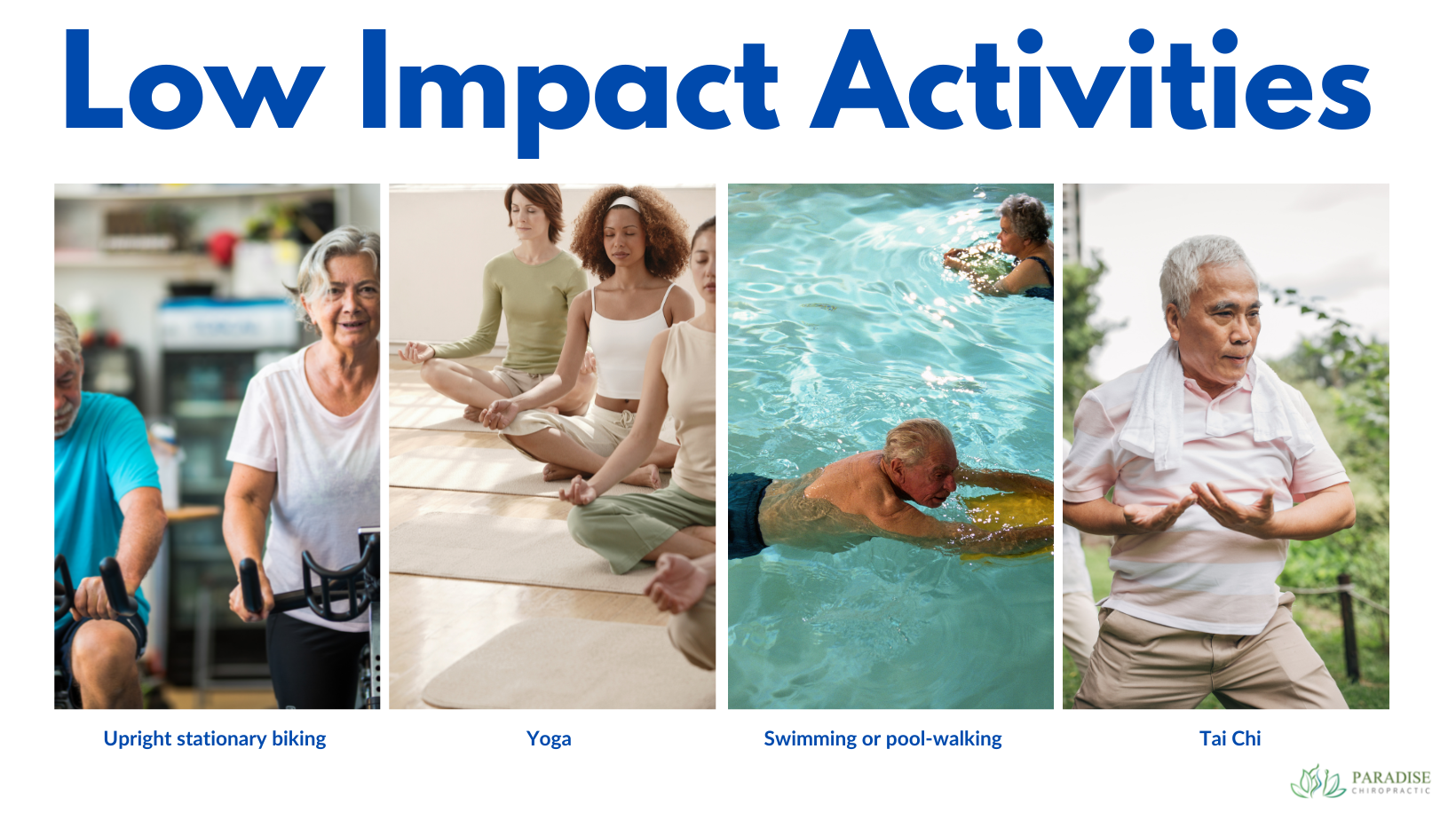
|
Dr. Kimberly Huynh |
|
|
Feb 1, 2023 · 6 min |

As we age, it is common for joint pain and stiffness to arise. In later years, the body produces less synovial fluid, which lubricates the joints and prevents the cartilage (that protects the ends of the bone) from drying out. As a result, joint movements feel more strained, and extra effort is required. Similarly, arthritis refers to a variety of conditions that involve pain, stiffness, and inflammation in one or more of the joints.
1 in 5 Canadians are affected by arthritis [1]
The two main classifications of arthritis include Osteoarthritis and Rheumatoid Arthritis.
Osteoarthritis, also known as degenerative joint disease, is the most common cause of multiple joint pain in the elderly. Osteoarthritis affects women twice more often than men, with symptoms appearing in women as early as their 40s and being affected twice more than men by 65.[2] Symptoms may include mild morning stiffness that tends to go away with activity.
Rheumatoid arthritis involves the body’s immune system attacking the lining of the joints. The majority of affected are younger adults in their 30s-40s, but can also be seen in adults in their 60s.[4] Individuals with rheumatoid arthritis often have longer-lasting morning stiffness (60 minutes longer) and tend to flare up with inactivity.
Common symptoms of arthritis are: • Pain • Stiffness • Crepitus (creaks and clicks) • Inflammation (swelling, warmth, tenderness, and redness) • Decreased range of motion • Loss of function • Weakness • Instability • Joint deformities
Joint pain and stiffness can be multifactorial, ranging from gender, weight, family history, accidents, past surgeries, the physical demands of work, and lifestyle. Additionally, the lack of physical activity is a contributor to body pain with the 2019 ParticipACTION Adult Report Card reporting as little as 16% of Canadian adults (aged 18-79) achieving the national guidelines of 150 minutes of moderate-to-vigorous activity per week. Little to no exercise can lead to weak supporting muscles putting more stress on joints.
Arthritis management focuses on relieving symptoms and improving joint function. It is best to try a variety of treatment and management options to see what works best for you.
Having Arthritis Puts You 5 x at Risk for Having Mobility Issues.
[1]
Generally, when pain and stiffness is experienced in the joint, it is best to keep moving. The Public Health Agency of Canada recommends moderate to vigorous aerobic activity, totalling 2.5 hours (150 minutes) a week. Physical activity plays an important role in health, well-being, and quality of life.
Tips to be more active:
• Choose physical activities you enjoy
• Set a routine
• Do it with a friend, family, or coworker
• Use exercise apps such as FitOn and Strava
• Limit TV, computer, and cellphone time
• Walk, bike, or run instead of taking the car
• Spread sessions throughout the week
• Join a team, class, or hire a personal trainer

Examples of healthy joint activities include low-impact aerobic activities such as swimming, biking, running on a padded track or elliptical machine, walking, yoga, and bicycling. These activities have a low risk of injury and do not twist or “pound” the joints too much. Strengthening activities help build up muscles and increase bone density. Examples include weight-lifting, body-weight exercises such as push-ups, using resistance bands, and climbing stairs. Physical activity is generally safe for everyone who does not have a suspected or diagnosed medical condition, or experiencing a high-risk pregnancy. Consult a health professional if you are unsure how much and what type of physical activity is appropriate for you.
Many seek passive therapy for arthritic management. Passive care for arthritis offered at Paradise Chiropractic includes chiropractic, massage, and acupuncture. Passive care does not require the patient to exert physical effort to participate in, and instead relies on the practitioner to administer all the necessary care manually. Chiropractic therapy is a safe and effective approach to arthritic management. Chiropractic adjustments can help improve pain and mobility in the spine and extremities by using varying degrees of force to adjust misaligned joints. In addition to adjustments, exercise prescriptions, diet and lifestyle guidance are offered for a complete holistic approach.
40% of people with arthritis experience pain that limits activities. [1]
Arthritis can impact basic day-to-day activities, but with some adjustments, you can keep doing the things you need and love to do.
1. Improve sleep. Recommended amount of sleep for adults is 7-8 hours.
2. Choose appropriate footwear. The back, hips, knee, and ankle pain are greatly affected by the kind of shoes we wear. Aim for wide-toe shoes with adequate arch support. Read about orthotics here. For more about feet rehab click here.
3. Quit smoking. Studies have shown that smoking reduces blood supply to the bone and to other parts of the body. Smoking decreases absorption of calcium for your diet which is necessary for bone mineralization. With less bone mineral, smokers can develop fragile bones (osteoporosis). In addition, smoking is associated with a higher risk of low back pain and rheumatoid arthritis.
4. Eat an anti-inflammatory diet. The food we put into our bodies play a large role in our physical health and overall wellness. Read about healthy eating here.

5. Use splints and braces. The appropriate one can add support and reduce risk of injury. Consult with your health practitioner to see if it is right for you. We carry a variety here.
6. Have good work ergonomics and posture. Whether you are standing, sitting, or lifting, it is best to do it with intention and take frequent breaks in-between.
7. Activity modification. If you have activities that cause pain, try modifying them to make it easier on your joints.
• Carry lighter loads of groceries instead of one heavy trip.
• Use a small stool or bench when gardening.
• Walk on hiking/forest trails as much as possible instead of concrete sidewalks.
• Use your hips and knees to lift instead of lower back.
• Balance activity with rest. Lighten your schedule and ask for help when needed. Pace yourself and take breaks when needed.
At Paradise Chiropractic, our team of health practitioners offers joint pain and arthritis treatment tailored to each individual.
[1] Arthritis Society Canada. (n.d.). Arthritis facts, figures and statistics. Arthritis Facts, Figures and Statistics . Retrieved January 13, 2023, from https://arthritis.ca/about-arthritis/what-is-arthritis/arthritis-facts-and-figures
[2] Goolsby, M. (n.d.). Osteoarthritis risk factors in women & how to prevent them. Hospital for Special Surgery. Retrieved January 13, 2023, from https://www.hss.edu/conditions_why-women-higher-risk-getting-arthritis.asp#:~:text=Among%20people%20with%20osteoarthritis%2C%20there,55%2C%20after%20women%20enter%20menopause
[3] Senthelal S, Li J, Ardeshirzadeh S, et al. Arthritis. [Updated 2022 June 19]. In: StatPearls [Internet]. Treasure Island (FL): StatPearls Publishing; 2022 Jan-. Available from: https://www.ncbi.nlm.nih.gov/books/NBK518992/
[4] Yaseen, K. (2022, December 14). Osteoarthritis (OA) - bone, joint, and Muscle Disorders. Merck Manuals Consumer Version. Retrieved January 13, 2023, from https://www.merckmanuals.com/home/bone,-joint,-and-muscle-disorders/joint-disorders/osteoarthritis-oa